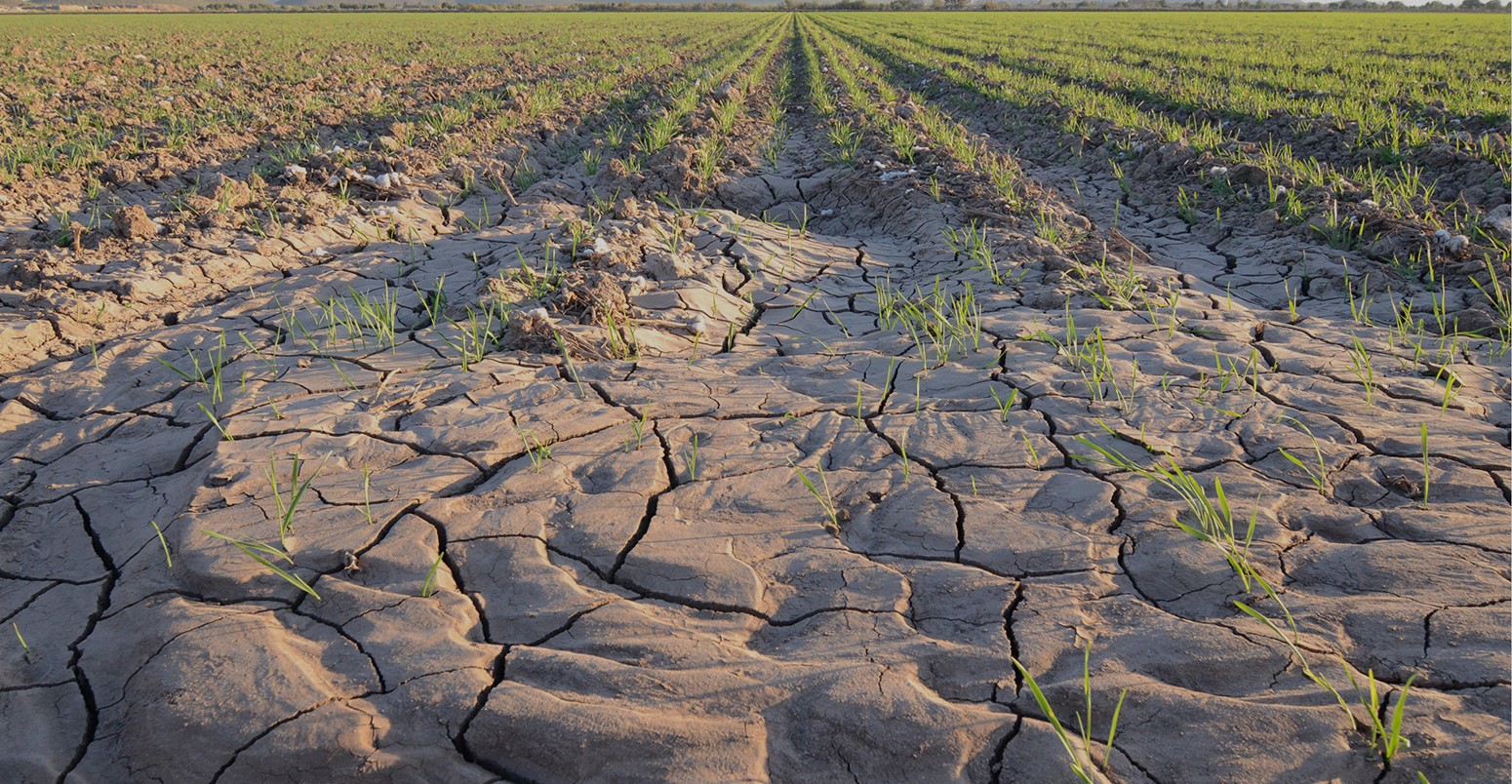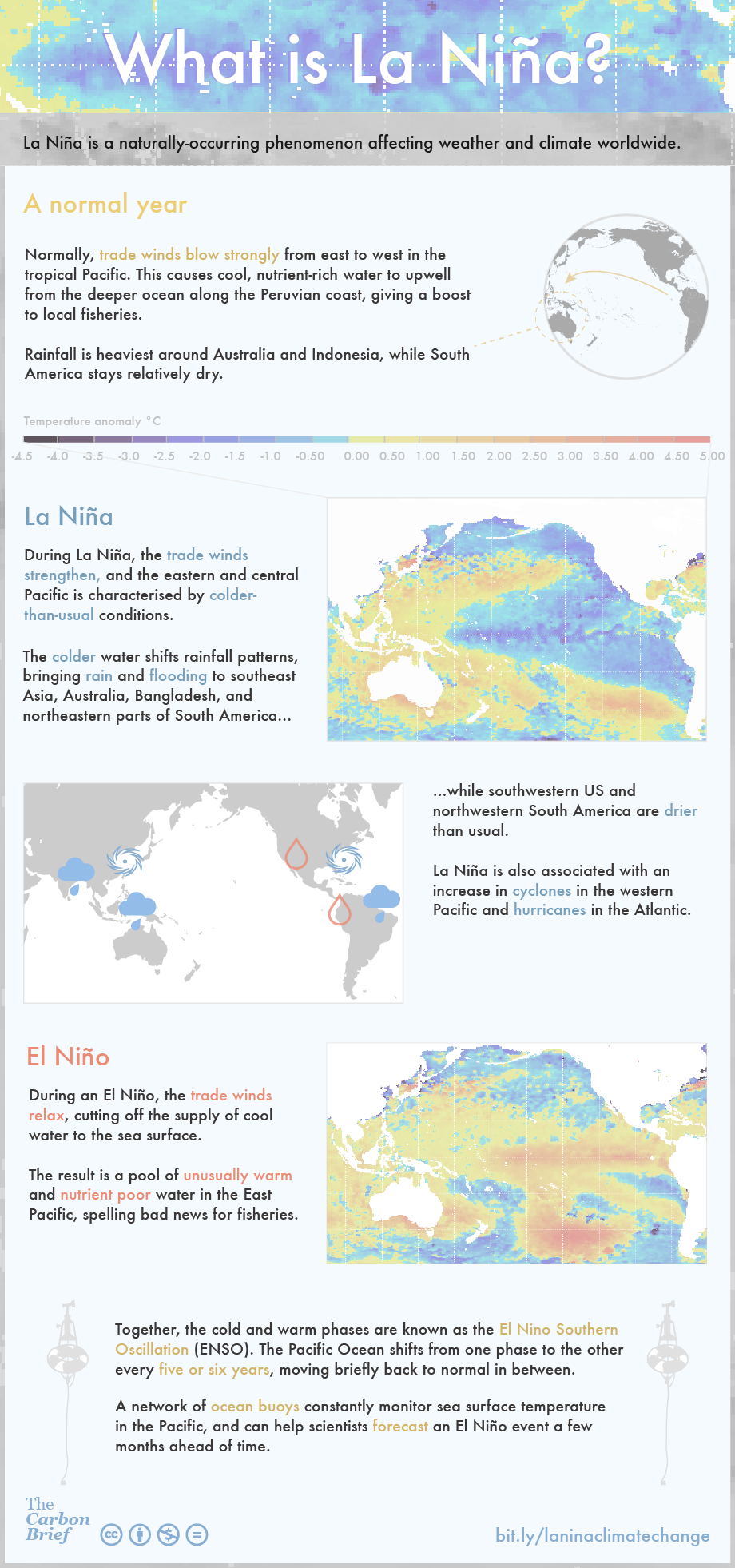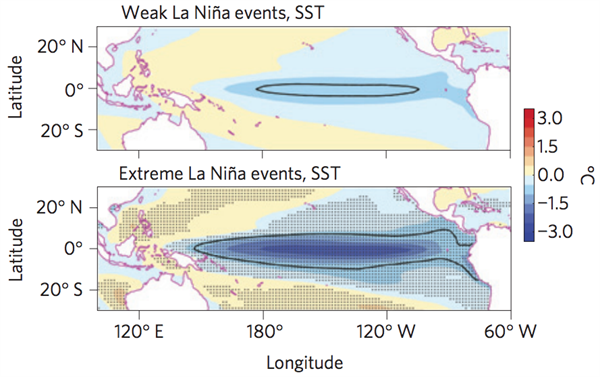
Expect twice as many extreme La Niña events under climate change, study warns
Robert McSweeney
01.26.15Robert McSweeney
26.01.2015 | 4:00pmThe Pacific weather phenomenon known as El Niño or ‘The Little Boy’ is regularly in the news. Scientists keep a close eye on its status as events can cause devastating extreme weather around the world.
But El Niño has a lesser-known sister, La Niña, which also has a dramatic impact on global weather. Now a new study suggests that we could see La Niña events occurring twice as often as the climate warms.
The lesser-known sibling
Every five years or so, weakening trade winds causes a shift to warmer than normal ocean temperatures in the eastern equatorial Pacific Ocean, a phenomena known as El Niño.
La Niña, or ‘The Little Girl’, is El Niño’s cold water counterpart. During La Niña events the trade winds strengthen, and the central and eastern Pacific Ocean becomes even colder than normal. La Niñas are known to bring drought to the southwestern US, floods to Central America, and hurricanes to the Atlantic Ocean.
Together, the warm and cold events form the El Niño-Southern Oscillation (ENSO), and cause most of the fluctuations in global weather we see from one year to the next.
Understanding how extreme La Niña will change as global temperatures rise has challenged scientists for the past three decades. A new paper, published in Nature Climate Change, suggests that extreme La Niña events will occur almost twice as often in the twenty-first century than they did in the twentieth.
Credit: Rosamund Pearce, Carbon Brief
What makes an extreme La Niña?
Scientists judge how strong a La Niña event is by how cold central Pacific Ocean temperatures get. To be an ‘extreme’ event, sea surface temperatures have to drop over 1.75 degrees Celsius lower than normal, as the map below shows.
The difference in sea surface temperatures (SST) between a weak (upper) and an extreme (lower) La Niña event. Modified from Cai et al. (2015)
Extreme La Niña events can cause havoc with global weather, says lead author Dr Wenju Cai from the Commonwealth Scientific and Industrial Research Organisation (CSIRO) in Australia. He tells Carbon Brief about some of the impacts of the extreme La Niña in 1998-99:
“The southwestern United States experienced one of the most severe droughts in history. Venezuela endured flash flooding and landslides that killed 25,000 to 50,000 people. In China, river floods and storms led to the death of thousands, and displaced over 200 million people. Bangladesh experienced one of the most destructive flooding events in modern history, with over 50 per cent of the country’s land area flooded. While the 1998 North Atlantic hurricane season saw one of the deadliest and strongest hurricanes in the historical record, claiming more than 11,000 lives in Honduras and Nicaragua.”
Every 13 years
Running future simulations in climate models with present-day emissions, Cai and his colleagues find 73 per cent increase in extreme La Niña events in the twenty-first century when compared to the twentieth.
In other words, if greenhouse gas emissions continue at current rates, the world would see an extreme La Niña event every 13 years, rather than every 23 years.
Of the 21 models they used, 17 of them show the frequency of La Niña events increasing. This makes it the first study on the future of La Niña to find strong agreement between models, Cai says.
Cold events in a warmer world
In a separate paper last year, Cai found that extreme El Niño events are also expected to occur more often in the future. Finding increases in both extreme La Niña and El Niño events may seem counterintuitive, Cai says:
“Extreme El Niño and extreme La Niña are opposite phases. If extreme El Niño increases in frequency, one would have thought that extreme La Niña would decrease in frequency. But this is not the case. And the increased frequency of extreme La Niña is in part linked to increased frequency extreme El Niño.”
The new study finds that extreme El Niño events create the right conditions for an extreme La Niña to develop. This was seen at the end of the twentieth century when the 1998-99 La Niña followed the 1997-98 El Niño.
The study shows that three-quarters of extreme La Niña events in the future will happen in quick succession after an extreme El Niño event.
An accompanying News & Views article, by Dr Antonietta Capotondi from the University of Colorado, says the study has important implications as it shows that extreme weather caused by La Niña may follow straight after the devastating impacts of an extreme El Niño. She concludes:
“The possibility of more frequent devastating La Niña events must be seriously considered was we prepare to face the consequences of global warming.”
Main image: Drought parched cotton field, USA.
Cai, W. et al. (2015) Increased frequency of extreme La Niña events under greenhouse warming, Nature Climate Change, doi:10.1038/nclimate2492 & Capotondi, A. (2015) Extreme La Niña events to increase, Nature Climate Change, doi:10.1038/nclimate2509
-
Expect twice as many extreme La Niña events under climate change, study warns



